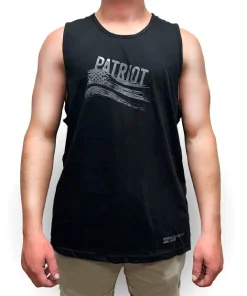SARMs
RAD 150 vs RAD 140 Explained: Potency, Effects, and the Best Option
RAD-140, also known as Testolone, and RAD-150 belong to SARMS. They both have shown promising benefits in research trials with fewer adverse effects. These observed effects may involve pathways associated with lean tissue development, skeletal integrity, and energy metabolism in research models.
In this blog, we will discuss all the details about these SARMS, their similarities and differences, safety concerns, and the best option. Keep reading to the end!
What is RAD 140?
RAD 140, also known as Testolone, belongs to the category of SARMS. SARMS stand for Selective Androgen Receptor Modulators. Initially, RAD-140 was developed to modulate pathways associated with cachexia and osteoporosis in research models.
What is RAD 150?
RAD 150 is the modified version of RAD-140. The ester chain is added to develop RAD-150 in research investigations. This extra addition may extend its half-life, efficacy, and stability during clinical trials. Preclinical investigations of RAD 150 on animals have found its potential to exhibit anabolic activities in research models.These anabolic activities may involve the regulation of physiological processes associated with tissue accretion, bone mineral density, lipid mobilization, and metabolic rate in controlled laboratory studies.
Furthermore, its working mechanism is similar to that of its parent compound RAD-140. Studies have suggested that it may selectively bind to androgen receptors in lean and skeletal tissues to exert its potential biological effects under experimental conditions.
Key Similarities Between RAD 150 and RAD 140
The following are the similarities of RAD 140 and RAD 150:
-
Anabolic Activity in Research Models
Research studies have indicated that these Selective Androgen Receptor Modulators (SARMs) may influence anabolic pathways in research models during clinical trials. These compounds may modulate androgen receptor activity in a manner similar to endogenous androgens, potentially leading to increased protein synthesis and reduced catabolic effects. This may support the development of lean tissue and help mitigate tissue degradation in laboratory settings.
-
Adipose Tissue Modulation in Research Models
In preclinical research, Selective Androgen Receptor Modulators (SARMs) have shown potential to influence adipose tissue metabolism in laboratory settings. This may occur through two primary mechanisms: first, anabolic activity in lean tissue may increase overall metabolic demands, potentially resulting in greater utilization of stored energy substrates. Second, SARMs may promote lipolytic activity, facilitating the breakdown of triglycerides into free fatty acids. These combined effects may support the modulation of body composition in research models.
-
Metabolic Rate Modulation in Research Models
Preclinical investigations suggest that Selective Androgen Receptor Modulators (SARMs) may influence metabolic rate in laboratory models. An elevated metabolic rate may impact overall energy utilization and substrate turnover, potentially contributing to enhanced energy availability and endurance capacity under controlled experimental conditions. These effects may also be associated with shifts in body composition, including reductions in adipose tissue, within research environments
Key Differences Between RAD 150 and RAD 140
Despite being similar to each other, they also possess some key differences. These differences are explained below:
-
Chemical Structure
RAD 150’s chemical structure contains an extra ester chain, which differentiates it from its parent compound, RAD 140. It is considered a modified version of RAD 140.
-
Half-Life
Clinical trials on animals suggest that the half-life of RAD 150 may be longer in research studies than that of RAD 140. This half-life was found to result from the addition of an ester chain.
-
Absorption Rate
In preclinical research, the absorption rate of RAD 140 was higher than that of RAD 150. This higher rate may absorb the RAD 140 more quickly, and thus its influence may easily be eliminated from research models in trials.
-
Potential Benefits
Research studies found that RAD-150’s potential benefits may be sustained and present for a more extended period in research subjects than RAD-140.
Which Option is Better?
More research has been conducted on RAD140 compared to RAD-150. Further, the results of RAD 140 are more predictable during trials. Therefore, researchers use RAD-140 for investigation. RAD-140 has also been shown to have potential for promoting anabolic activity in lean tissue and supporting skeletal tissue integrity in research models during investigations. Hence, RAD-140 may be a suitable candidate for studies focused on musculoskeletal systems.
Price Comparison
Here is an overview of the price comparison of RAD-140 and RAD-150 SARMS:
| SARM | RAD-140 | RAD-150 |
| Price | $29.84 – $168.31 | $35.50 – $161.63 |
Legal Status
Regarding their legality, they are not FDA and WADA-approved. They are legal for use in controlled and licensed research environments only. Human consumption is strictly prohibited.
Final Thought
RAD-140 and RAD-150 are SARMS. They are different in chemical structure, half-life, and absorption rate in research subjects. Coming towards the best option, researchers recommend RAD-140 for investigations, as it is safer and secure with fewer adverse effects.
Frequently Asked Questions (FAQS)
What is the best place to buy RAD-140 (testolone) and RAD-150 online?
The best place to buy RAD-140 and RAD-150 online is BehemothLabz. We offer these SARMs after getting them approved by an independent laboratory. Furthermore, our products are of the highest quality and are ready to deliver optimal results in research trials. Similarly, our prices are very reasonable, and the products can be delivered nationally and internationally.
What does RAD-140 (testolone) do to the research models?
RAD-140 or Testolone may influence the patterns associated with lean tissue development, skeletal integrity, and adipose tissue reduction in research models. These potential effects may occur selectively, without significantly affecting other physiological systems in the subjects.
Does RAD-150 raise testosterone in test subjects?
No, there are no clues found in clinical trials regarding the raising of testosterone levels in research subjects. It may only mimic the effects of testosterone and thus exhibit anabolic activities in subjects during trials.
References:
- ROSS, SVANTE B., and S. BENGT A. ÅKERMAN. “Cyclization of Three N-ω-Haloalkyl-N-Methylaminoaceto-2, 6-Xylidide Derivatives in Relation to Their Local Anesthetic Effect In Vitro and In Vivo.” The Journal of Pharmacology and Experimental Therapeutics 182.2 (1972): 351-361.
- Kumar, Ankur. “RAD 150 SARM Reviews: Side Effects, Cycling, Dosage & Results.”
- Koert, Willem, et al. “SARMs: an emergent health problem in fitness and bodybuilding.” TSG-Tijdschrift voor gezondheidswetenschappen 99 (2021): 161-164.
- Koert, Willem, et al. “SARMs: een nieuw gezondheidsprobleem in fitness en bodybuilding.” TSG; Tijdschrift voor gezondheiswetenschappen 99.4 (2021): 161-164.











